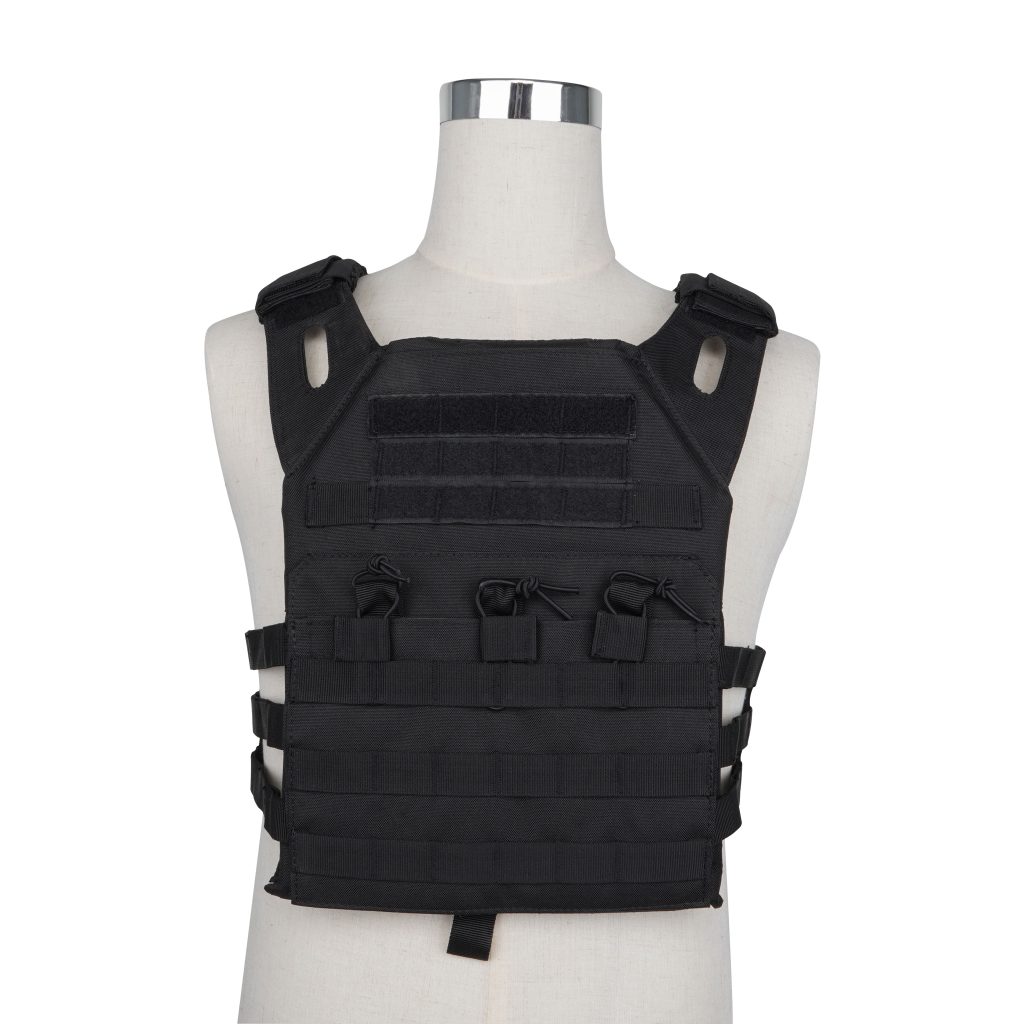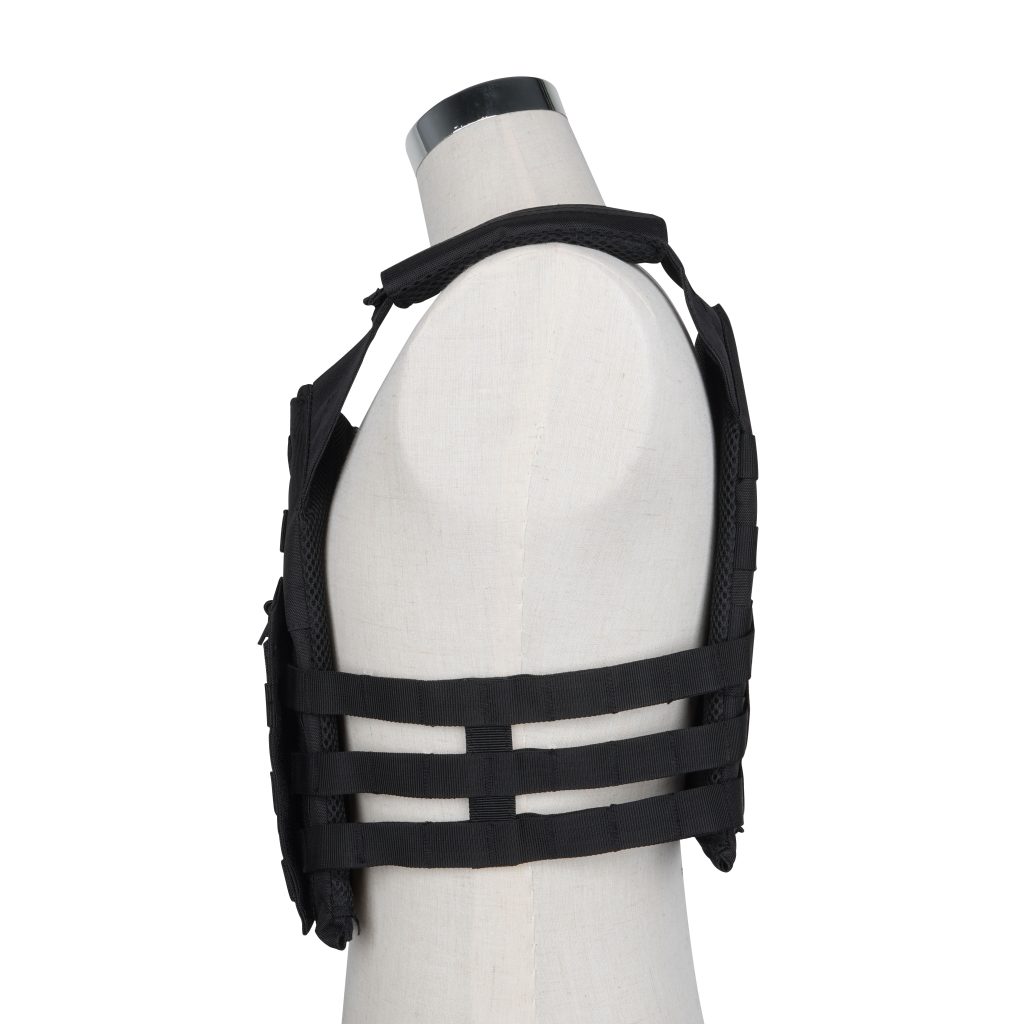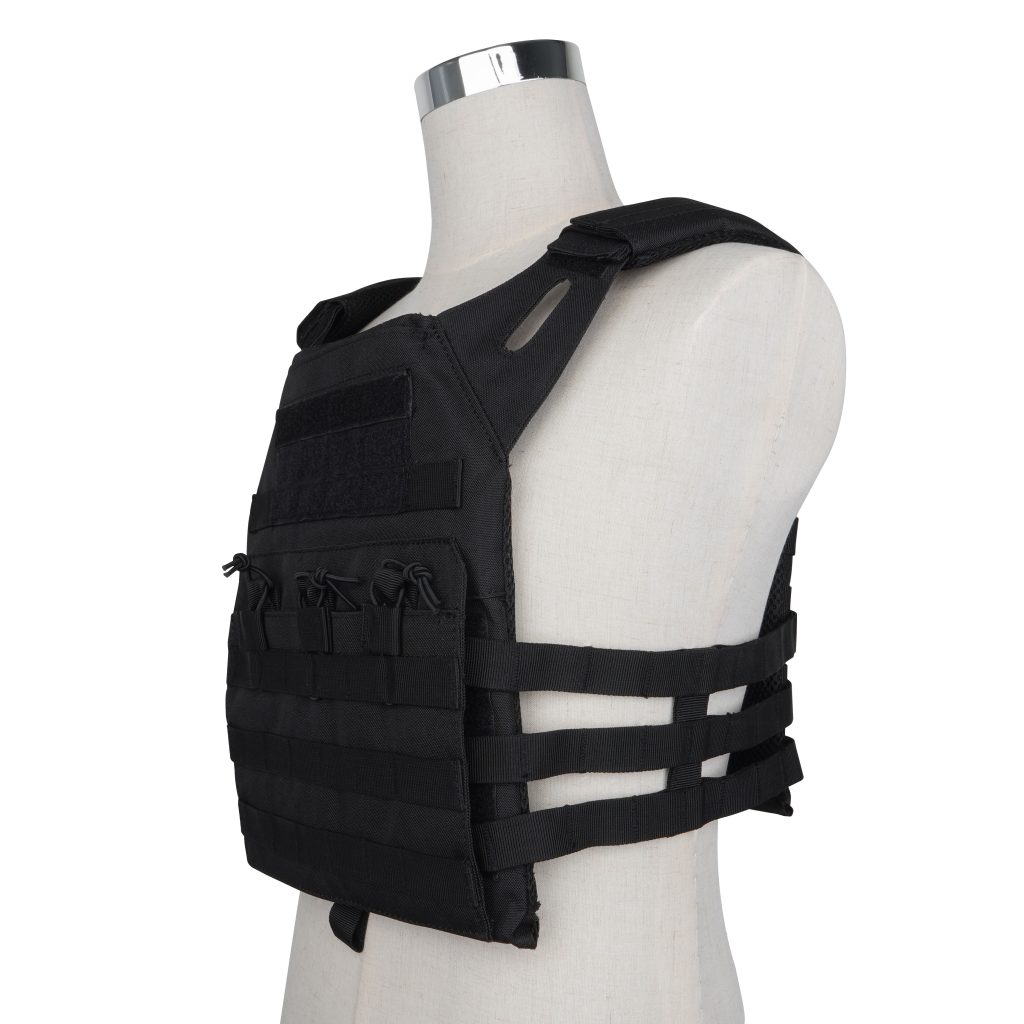
Level III hard armor is designed to provide robust protection against high-velocity rifle rounds. This type of body armor is often worn by law enforcement and military personnel, who may encounter such threats during operations. Level III armor is considered hard armor because it incorporates rigid plates, typically steel, ceramic, or polyethylene, that can withstand rifle fire.
The effectiveness of Level III hard armor makes it a suitable choice for high-risk scenarios. While it offers significant protection, it is also heavier and more rigid than lower-level soft armor, which can impede mobility and comfort.
Despite this, its balance of protection and wearability is crucial in dangerous environments. In this post, we’ll discuss the performance of level III body armor and whether it is a good choice for you. Let’s dive in!
Body Armor Ratings
Body armor ratings are established to guide users in selecting the appropriate level of protection for their needs. These ratings are determined by the National Institute of Justice (NIJ), which sets the standards for ballistic resistance of personal body armor. The ratings indicate the type of ammunition the armor can stop and the velocity of those rounds.
- Level IIA: Offers the least protection
- Level IIIA: Common for everyday wear
- Level III: Designed to defeat rifle rounds
- Level IV: Provides highest ballistic resistance
Armor ratings range from Level IIA, which offers the least protection, to Level IV, which provides the highest level of ballistic resistance. Each level is tested rigorously to ensure it meets the specified protection criteria. Level III body armor sits near the higher end of this spectrum and is designed to defeat rifle rounds.
The NIJ Protection Levels of Body Armor
The National Institute of Justice (NIJ) defines several levels of protection offered by body armor, which are categorized based on the threat they can stop. These levels ensure standardized protection for wearers and help them make informed decisions when acquiring body armor. NIJ standards are widely recognized and followed by body armor manufacturers.
From Level IIA to Level IV, each protection level is associated with different threat types, ranging from handguns to high-caliber rifle fire. Level III body armor is tested against complete metal jacket rifle rounds, providing a benchmark for those seeking protection in potentially hazardous situations involving such weapons.

What Is Level III Hard Armor?
Level III hard armor is a classification of personal protective equipment designed to defend against high-velocity rifle bullets. This type of armor is constructed to meet specific criteria the NIJ sets, ensuring it can stop certain rifle rounds without penetration. It is a step up from Level IIA and Level II armor, intended to halt lower-velocity handgun rounds.
Recognized for its balance between protection and manageability, Level III armor is used in scenarios where rifle threats may occur. While it provides more comprehensive protection than its lower-level counterparts, it remains less bulky than the highest-rated Level IV armor, making it a practical choice for extended wear in tactical situations.
What Are Level III Hard Armor Plates Made Of?
Level III body armor plates are constructed from various high-strength materials, each chosen for its ability to stop rifle rounds. The most common materials for these plates include ultra-high molecular weight polyethylene (UHMWPE), ceramic, and steel. These materials are engineered to disperse the energy of a bullet impact, preventing penetration and minimizing injury to the wearer.
The choice of material significantly affects the armor’s weight, thickness, and comfort. UHMWPE offers a lightweight option, while ceramic plates balance weight and protection. Steel plates are known for durability but tend to be heavier, which can affect the wearer’s agility and stamina over long periods of use.
UHMWPE
Ultra-high molecular Weight Polyethylene (UHMWPE) is a type of plastic known for its high strength-to-weight ratio, making it an ideal material for Level III body armor plates. UHMWPE plates are appreciated for their lighter weight than ceramic or steel, contributing to increased mobility and comfort for the user.
Ceramic
Ceramic plates are a common component in Level III body armor due to their ability to break up incoming rounds, dissipating the energy and stopping the bullet from penetrating. These plates are constructed from materials like silicon carbide or boron carbide, both known for their hardness and lightweight properties compared to steel.
Steel
Steel is another material utilized in Level III body armor plates, favored for its toughness and durability. Steel plates are often coated with a layer of anti-spalling material to mitigate the risk of shrapnel from bullet impacts. This material has been used for many years due to its reliability and the excellent protection it offers against ballistic threats.
Spalling and Fragmentation
Spalling and fragmentation are significant concerns regarding steel body armor plates. Spalling occurs when bullets shatter upon impact, sending fragments and shrapnel away from the armor’s surface. This can pose a danger to the wearer and nearby individuals. Steel plates are often coated with materials that capture these fragments to combat this.
Is Level III Body Armor NIJ Certified?
Level III body armor is subject to certification by the National Institute of Justice (NIJ) to ensure it meets the required standards for ballistic resistance. Manufacturers submit their products for rigorous testing, where armor must withstand specific rounds at designated velocities to gain NIJ certification.
An NIJ-certified Level III armor plate guarantees that it has been independently tested and verified to protect against the threats it is rated for. Users can trust the certification process, which includes testing for durability, performance, and safety under various conditions, providing confidence in the armor’s protective qualities.
How Good Is Level III Body Armor?
Level III body armor is rated to stop various high-powered rifle rounds that pose severe threats in combat and tactical situations. Specifically, it is tested to stop rounds such as:
- 7.62×x39 123gr PS Ball (MSC)
- 7.62×51 M80 NATO, which can travel at velocities up to 2850 ft/s
- 5.56×45 55gr (M193), which can reach speeds up to 3150 ft/s
Level III armor can also halt other small arms munitions, including the 7.62×39 123gr PS Ball (MSC) and various 5.56/.223 munitions. While it provides comprehensive protection against these standard rifle rounds, it is important to note that armor-piercing or Higher caliber rounds may require higher protection, such as Level IV armor.

What Can Level III Body Armor Not Protect Against?
Level III hard armor provides robust protection against many common rifle threats, but certain types of ammunition and scenarios may not offer sufficient defense. Understanding the limitations of Level III hard armor is essential to making informed decisions about protective gear.
Level III hard armor may not fully protect against:
- Armor-piercing (AP) rounds : Some specialized ammunition designed to defeat armor, such as certain AP rifle rounds, can penetrate Level III hard armor due to their hardened penetrator cores.
- High-caliber rifle rounds : Extremely powerful or high-caliber rifle ammunition, such as .30-06 or .50 BMG, can exceed the protective capabilities of Level III hard armor.
- Close-range shotgun blasts : Level III hard armor is not specifically designed to stop shotgun slugs or other high-velocity projectiles at close range, which can cause significant blunt force trauma despite the armor’s ballistic resistance.
While Level III hard armor offers substantial protection against many rifle threats, users should consider the specific risks they may face and the capabilities of higher-level armor options like Level IV when dealing with these advanced threats.
Differences Between Soft Body Armor and Hard Body Armor
Soft and hard body armor differ primarily in the level of protection they offer and their material composition. Soft body armor is typically made from woven or laminated fibers that can stop handgun rounds, making it more flexible and comfortable for extended wear. It is suitable for everyday use by law enforcement officers and is concealed easily under clothing.
On the other hand, hard body armor includes rigid plates made of materials like steel, ceramic, or polyethylene designed to stop rifle rounds. While it offers higher levels of protection, it is also bulkier and less comfortable than soft armor. Hard armor is often worn over clothing and is ideal for high-threat situations where rifle fire is possible.
Differences Between Level 3A, Level 3, and Level 3+ Body Armor
Level 3A, Level 3, and Level 3+ body armor each offer different degrees of protection and are tailored for specific threat levels. Level 3A is considered soft armor capable of stopping bullets from most handguns. It is lighter and more flexible, making it a popular choice for law enforcement to use for covert protection and daily wear.
Level 3 armor is a step up, designed as hard armor to stop rifle rounds such as the 7.62×51 M80 NATO. Level 3+ armor, while not an official NIJ rating, is an industry term for armor that protects against higher velocity rifle rounds that exceed the capabilities of standard Level 3 plates. Each level addresses different risk profiles, with higher levels more suitable for increasingly dangerous environments.
Level III Body Armor Pros and Cons
Level III body armor offers significant protection advantages, making it an essential piece of equipment in many high-risk situations. The ability to stop common rifle rounds provides the wearer with high security. Additionally, advancements in materials and design have led to lighter and thinner Level III plates, enhancing mobility and comfort without sacrificing protection. The following are the pros and cons of level III body armor:
Pros
- Stops rifle rounds effectively
- Higher protection level than IIIA
- Suitable for high-risk environments
- Widely available and standardized
- Provides enhanced ballistic defense
Cons
- Heavy and bulky under clothing
- It’s more expensive than lower levels

Should You Buy Level III Body Armor?
Deciding to purchase Level III body armor should be based on a realistic assessment of the threats one is likely to encounter. While not everyone needs the robust protection Level III offers, it can be a worthwhile investment for those in high-threat environments or occupations. Understanding personal risk factors and seeking professional guidance can help make an informed decision about purchasing this type of body armor. Level III body armor is useful for:
High-risk Professions (eg, Law Enforcement, Security)
Professionals working in law enforcement or security often find themselves in situations where they are exposed to high-risk threats, including firearms. For these individuals, Level III body armor provides significant protection that could prove life-saving. The ability to stop rifle rounds is a necessity for many in these professions, where such threats are a part of their daily reality.
Dangerous Locations or Environments
Level III body armor offers an added layer of protection for those living or working in areas with a high incidence of violent crime or instability. In regions where armed conflict or violent criminal activity is prevalent, such armor can provide peace of mind and potentially life- saving benefits.
Potential Encounter with High-Powered Firearms
In situations where there is a realistic probability of coming into contact with high-powered firearms, wearing Level III body armor is strongly advised. This level of armor is capable of stopping bullets from most rifles, which are commonly used in severe criminal activity and active shooter incidents.
Personal Safety and Preparedness
Many prioritize personal safety, and being prepared for the worst-case scenario is a practical approach. For civilians who prioritize preparedness, Level III body armor can be an essential part of their safety plan, especially if they reside in areas where firearm-related incidents are more common.
Protection Against Rifle Rounds
Level III body armor is designed to protect against rifle rounds, which are more powerful and destructive than handgun ammunition. For those at risk of encountering such weaponry, this armor can be crucial in preventing serious injury or death.
Wrap-Up!
Level III body armor provides a significant layer of protection against rifle rounds, an essential feature for those in high-risk situations. It balances the need for stopping power against the practical considerations of weight and mobility. With its various materials, such as UHMWPE, ceramic, and steel, Level III plates are designed to meet the needs of law enforcement, security personnel, and anyone requiring additional safety measures.
